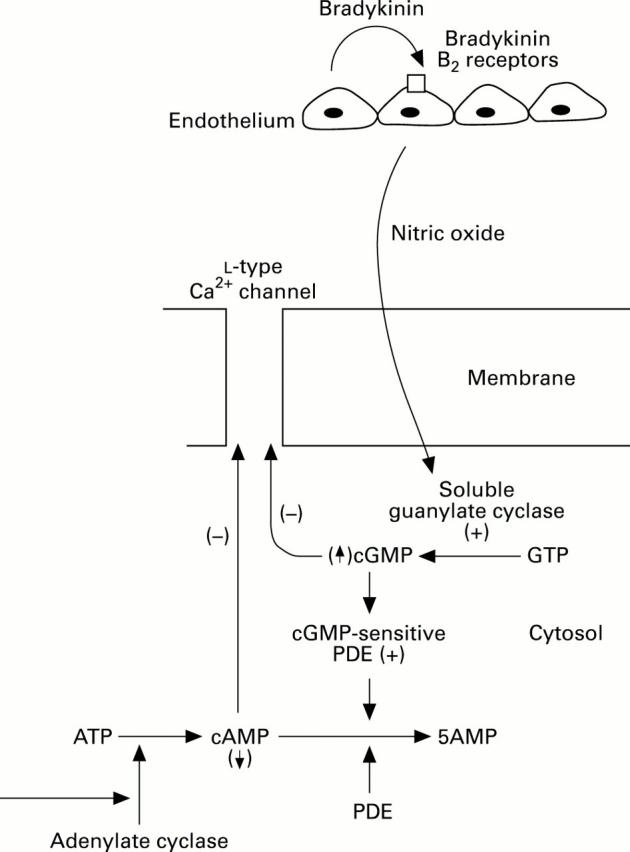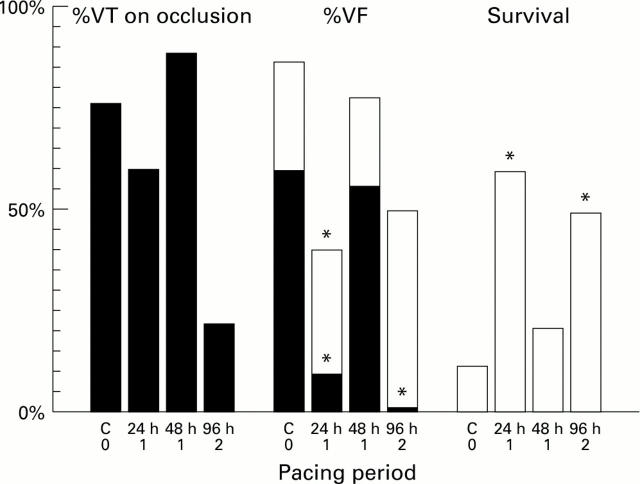Full Text
The Full Text of this article is available as a PDF (111.8 KB).
Figure 1 .
The incidence of ventricular fibrillation (VF) during coronary artery occlusion and reperfusion, ventricular tachycardia (VT) on occlusion, and survival rate following a combined ischaemia-reperfusion insult in anaesthetised dogs subjected to occlusion of the left anterior descending coronary artery at various times after right ventricular pacing (4 × 5 min at 220 beat/min). The incidence of VF was significantly reduced (*p < 0.05) 24 hours after pacing compared with unpaced controls (C) but this protection was lost 48 hours after the initial pacing stimulus. However, if dogs were repaced at this time protection was still apparent a further 48 hours later (at 96 hours). Filled columns, incidence of VF and VT during occlusion; Open columns, incidence of VF during reperfusion following a 25 minute period of coronary artery occlusion.
Figure 2 .

The role of endothelium derived endogenous protective mediators in ischaemic preconditioning and in cardiac pacing. Bradykinin is released, probably from endothelial cells (which have the mechanisms for generating and releasing kinins), which then acts on B2 receptors on the endothelial surface to increase the calcium transient within these cells and hence activate the L-arginine nitric oxide pathway. Nitric oxide then communicates with the cardiac myocyte, stimulates soluble guanylyl cyclase, and raises cGMP. This reduces cAMP and calcium entry through L-type calcium channels as well as suppressing myocardial oxygen consumption.



